Scientists Decode 2,000-year-old Curry Recipe in Vietnam
Traces of spices detected on a grinding slab and other stone tools unearthed in Vietnam reveal that curry was eaten in the region at least 2,000 years ago, CNN reported, citing the journal Science Advances.
The sandstone slab, buried 2 meters (6.5 feet) below the surface, was dug up in 2018 at the Oc Eo archaeological complex in southern Vietnam. The site was once an overseas trading hub of an ancient Southeast Asian kingdom known as Funan, according to a new study of the substances found on the slab.
“Preparing curry involves not only a diverse range of spices but also the use of grinding tools, considerable time, and human effort,” said study author Dr. Hsiao-chun Hung, a senior research fellow in the department of archaeology and natural history at Australian National University in Canberra.
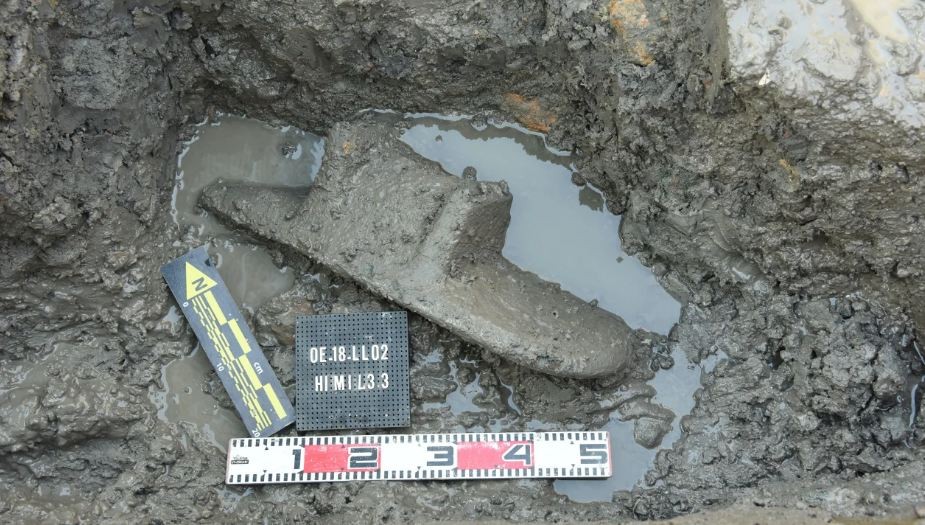 |
| The grinding slab was found two meters below the surface. Photo: Nguyen Khanh Trung Kien/Southern Institute of Social Sciences |
“Remarkably, even individuals residing outside of India nearly 2,000 years ago expressed a strong desire to savor the flavors of curry, as evidenced by their diligent preparations,” Hung said.
An analysis of 717 grains of starch recovered from the tools revealed eight types of spices including turmeric, ginger, galangal, sand ginger, fingerroot, clove, nutmeg and cinnamon. Many of the grains also showed signs of deformation, which suggests that they were damaged from grinding and look similar to the starch granules found in modern curry powder.
The findings offer clues to how curry — and the people who made it — migrated to Southeast Asia.
“This finding strongly suggests that the ancient inhabitants of Oc Eo utilised turmeric, ginger and other spices like cinnamon, clove and nutmeg as essential ingredients in their culinary practices, highly likely in the preparation of curry,” says Hung.
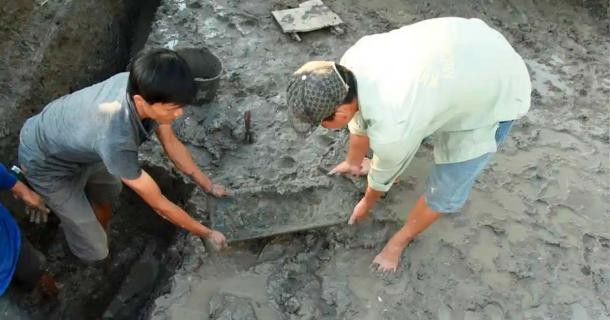 |
| Curry spice processing tools unearthed in Vietnam found in 2018. Photo: Nguyen Khanh Trung Kien/Southern Institute of Social Sciences |
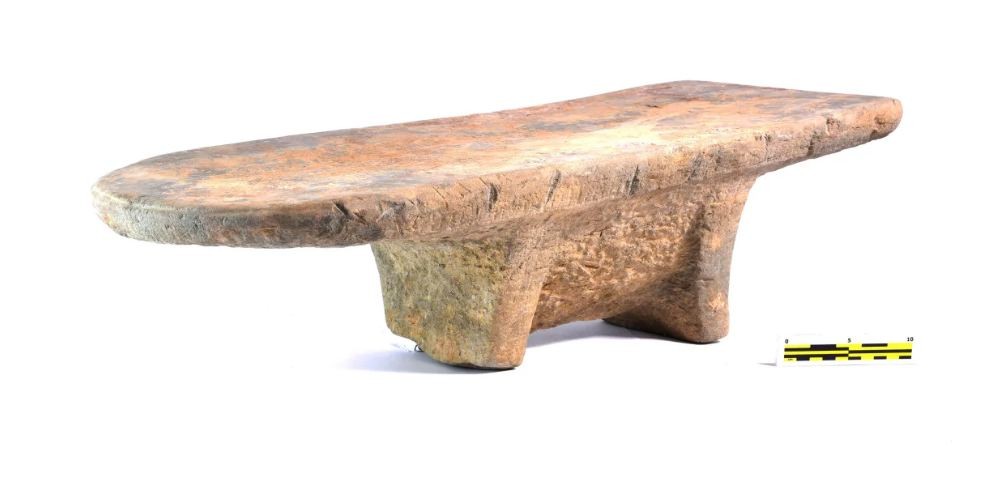 |
| A grinding slab found in Vietnam revealed traces of spices that give insight into how curry was made at least 2,000 years ago. Photo: Nguyen Khanh Trung Kien/Southern Institute of Social Sciences |
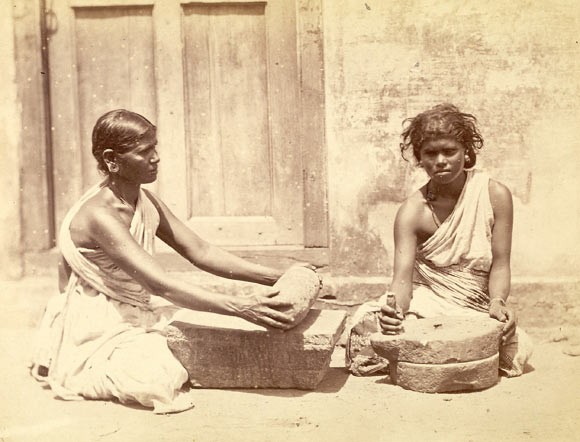 |
| This photograph, shown at the Vienna Universal Exhibition of 1873, shows at left a woman crushing spices with a stone roller on a grinding slab similar to those from Oc Eo (but without separately carved feet). The woman at right is grinding ragi (finger millet of Late Harappan African origin), a grain cultivated as a food staple in Southern India, between two round millstones. Photo taken at Madras (Chennai) in Tamil Nadu by Nicholas and Curths in c. 1870, from the Archaeological Survey of India. Image credit: British Library Board. |
The ingredients the researchers identified are similar to those in curries eaten in Vietnam and other places in Southeast Asia today.
“Nowadays, preparing curry in Vietnam has become much simpler for most families due to the widespread availability of curry powder in supermarkets. However, it is interesting to note that the curry recipe used today has not deviated significantly from the ancient Oc Eo period,” said study coauthor Dr. Nguyen Khanh Trung Kien, an archaeologist at the Center for Archaeology, Southern Institute of Social Sciences in Ho Chi Minh City.
He added that the team planned to recreate the 2,000-year-old curry based on the ingredients found at the site.
People were likely enjoying curry in India about 4,000 years ago, as evidenced by traces of turmeric, ginger, eggplant and mango found in cooking pots and dental plaque, the study noted, but this recent finding reveals that the production of curry has a long and fascinating history beyond India as well, Hung said.
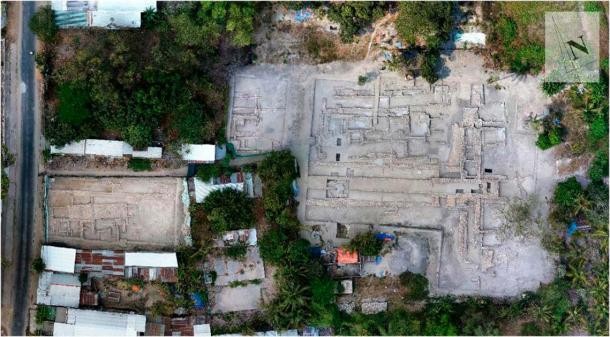 |
| The monuments in Go Sau Thuan seen from the air - Photo: Nguyen Khanh Trung Kien/Southern Institute of Social Sciences |
Some of the ingredients recovered from Oc Eo, such as turmeric, are similar to those found in Indian curries, while other components are more distinctively Southeast Asian, including coconut milk and galangal, a spice commonly found in curry pastes in that region but seldom used in Indian curry.
Maritime trading routes between South-East Asia and south Asia were established more than 3000 years ago, with spices such as nutmeg and clove coming from Indonesia and others such as turmeric and cinnamon from south Asia.
Hung said that it’s not clear exactly who made curry at the site, but they likely were migrants from India or local inhabitants in Vietnam influenced by South Asian culture. The large grinding stone — 76 centimeters (30 inches) long and 31 centimeters (12 inches) wide — was found with the remains of stilt houses, which would have stood either along or above water.
Most surprising, Hung said, was that some of the nutmeg seeds unearthed during the dig still released a unique aroma.
“Food culture is significant in human history,” Hung added. “When we enjoy delicious food, we often wonder about how its flavors were formed, the origins of the recipes, and when these culinary methods were first practiced.”
 | Visit The 100-Year-Old Oceanography Museum In Nha Trang When tourists arrive in Nha Trang, there is a 100-year-old oceanography museum that is the earliest scientific research facility in Vietnam, and an amazing Instagram ... |
 | Vietnamese Women’s Karate Team Win Gold In Asia On July 23, the Vietnamese women’s karate team won the gold medal in kumite after beating the Iranian team 2-0 in the final match at ... |
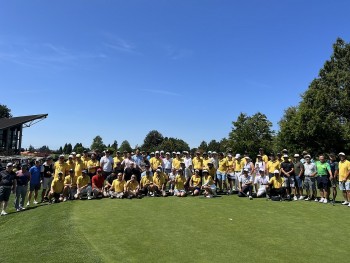 | Vietnam-Canada Business Association Holds Golf Tournament To Help Children with Cleft Palates The Vietnam-Canada Business Association (VCB Association) in collaboration with the Consulate General of Vietnam in Vancouver and the Richmond City Council in Vancouver organized the ... |
Recommended
 World
World
Pakistan NCRC report explores emerging child rights issues
 World
World
"India has right to defend herself against terror," says German Foreign Minister, endorses Op Sindoor
 World
World
‘We stand with India’: Japan, UAE back New Delhi over its global outreach against terror
 World
World
'Action Was Entirely Justifiable': Former US NSA John Bolton Backs India's Right After Pahalgam Attack
Popular article
 World
World
US, China Conclude Trade Talks with Positive Outcome
 World
World
Nifty, Sensex jumped more than 2% in opening as India-Pakistan tensions ease
 World
World
Easing of US-China Tariffs: Markets React Positively, Experts Remain Cautious
 World
World







